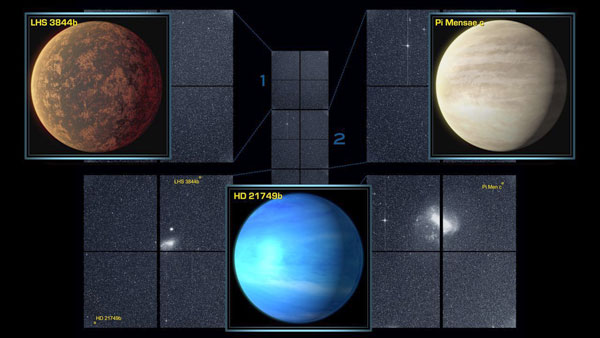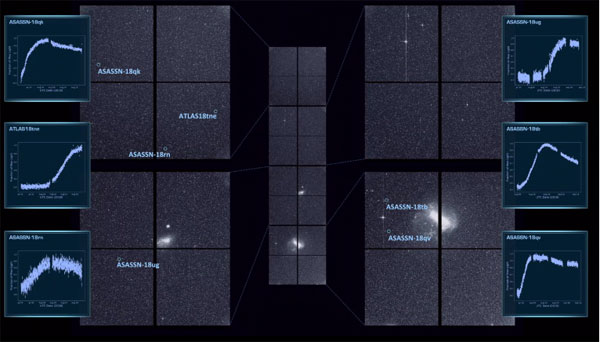The TESS mission announces eight confirmed planets along with hundreds of exoplanet candidates.
Astronomers on the Transiting Exoplanet Survey Satellite (TESS) team announced the discovery of eight confirmed planets, three of them less than 4 times Earth's diameter, and more than 300 exoplanet candidates at the winter American Astronomical Society (AAS) meeting in Seattle.

NASA / MIT / TESS
Launched in April 2018, TESS began science operations in July last year, surveying the sky from a “lunar resonant orbit,” and has now completed observations of six sectors, each monitored for 27 days at a time. By the time the mission is done, TESS’s wide-field cameras will have covered the whole sky in search of transiting exoplanets around 200,000 of the nearest (and brightest) stars.
The finds presented at the AAS meeting, which use only the first three months of observations, show that TESS is on track to discover several thousand exoplanets. Hundreds of astronomers are involved in the ground-based efforts that will follow up on, confirm, and characterize these planets. But details on the hundreds of candidates were sparsse; the first catalog paper is still forthcoming.
More details were available for the three confirmed planets that had diameters less than four times Earth's:
- Pi Mensae c, previously reported here, is an oddball of a super-Earth. About twice Earth’s size and five times Earth’s mass, the planet circles its Sun-like star in six days. What makes that odd is that its previously discovered sibling, Pi Mensae b, is a gas giant ten times Jupiter’s mass in a highly elongated, six-year orbit. How two planets on such different trajectories formed in a single system remains an open question.
- LHS 3844 b is a hot, slightly more than Earth-size planet that circles its red dwarf star in just 11 hours. As with the Pi Mensae planets, the formation of LHS 3844 b is a mystery. Fortunately, the system is only 49 light-years away, making it ideal for future studies.
- HD 21749 b, the newest discovery, is a sub-Neptune that’s three times Earth’s size but 23 times its mass. It’s denser than Neptune, but not so much that it’s rocky. Astronomers suspect it has a thick, heavy atmosphere. The planet is on a 36-day orbit, with additional transit data made available by the HARPS team.
The five larger confirmed planets are: HD 202772A b, HD 1397 b, HD 2685 b, HD 219666 b, and HATS-71 b.
The exoplanet-hunting satellite will also by the nature of its observations find things that go bump in the night, such as supernovae. Astronomers witnessed six Type Ia supernovae in just the first-light image, which was monitored for a month, says Michael Fausnaugh (MIT). By tracking these white dwarf detonations as they happen, astronomers can figure out what is causing the blasts.

NASA / MIT / TESS
And this is only the beginning. As Principal Investigator George Ricker (MIT) points out, the spacecraft’s orbit is stable, its cameras are performing beautifully, it has oodles of propellant left, and the only moving parts are four momentum wheels that should last for decades. As long as the mission continues to receive funding, there’s no reason TESS can’t keep on keeping on for at least another decade.
 0
0









Comments
You must be logged in to post a comment.